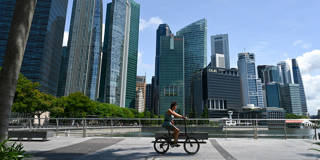During the pandemic, ASEAN+3 governments went all in to support their economies, not least by monetizing fiscal deficits. But pandemic-era policies must now be unwound against a backdrop of slower GDP growth, higher inflation, and increased debt.
SINGAPORE – The global economic landscape is changing fast. Scarring from the COVID-19 pandemic has weakened potential growth, making slower income gains the new normal for many countries. Geopolitical tensions – especially the trade and technology “war” between the United States and China – are threatening not only to halt globalization, a key enabler of growth over the last few decades, but also to split the world economy into separate blocs. And the days of low and stable inflation seem to be giving way to structurally higher and more volatile prices.

SINGAPORE – The global economic landscape is changing fast. Scarring from the COVID-19 pandemic has weakened potential growth, making slower income gains the new normal for many countries. Geopolitical tensions – especially the trade and technology “war” between the United States and China – are threatening not only to halt globalization, a key enabler of growth over the last few decades, but also to split the world economy into separate blocs. And the days of low and stable inflation seem to be giving way to structurally higher and more volatile prices.